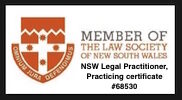The Minister for Home Affairs has just released the federal Government’s new Migration Strategy, aimed at repairing Australia’s migration program.
Highlights
The new Migration Strategy released on 11 December 2023 addresses reforms across Australia’s migration program, with a particular focus on temporary skilled migration and the international education sector.
The 8 key actions in the Government’s Migration Strategy roadmap have been developed through extensive consultation and draws on the key findings of the Migration Review, Nixon Review and the 483 public submissions it received.
The Strategy is 99 pages and discusses existing commitments, areas where changes will be implemented in 2024, or where future reform has been identified for consultation in 2024.
Temporary Skilled Shortage Visa
The government has announced a new Skills in Demand visa, which, once implemented, will replace the current Temporary Skills Shortage (subclass 482) visa. The key aspects of the new Skills in Demand visa are:
- Time period – the visa will provide for a 4-year stay for all streams;
- Three pathways – the visa will be split into three different pathways, set out in detail below;
- Service standards – a commitment to median processing times of 21 days
- Increased employee mobility – visa holders will have 180 days to find a new sponsor if they cease employment with their sponsor (up from the current 60 day period).
- Streamlined labour market testing – the Government has already removed the requirement to advertise positions through Workforce Australia with clarification on overlapping advertisements, and will subsequently increase the validity period of advertisements from 4 to 6 months (find out more here);
- Increased pathways to permanent residency – all visa holders will have a pathway to permanent residency, and time spent with any approved employer will count towards permanent residency eligibility.
- Potential for reduced upfront employer costs – the Government will explore moving employer fees to a monthly or quarterly model, to reduce upfront employer costs.
- Public sponsor register – the Government will develop a public register of approved sponsors, which will publish the numbers of sponsored workers and their occupations, to assist migrants seeking a new sponsor.
The new Skills in Demand visa will provide three pathways for temporary skilled workers:
| Tier 1 – Specialist Skills Pathway | Tier 2 – Core Skills Pathway | Tier 3 – Essential Skills Pathway |
|
|
The Government is further evaluating how best to develop this pathway for lower-paid workers under TSMIT but with essential skills, many of which are currently sponsored under Labour Agreements.
These new arrangements would be sector-specific, capped, embedded with stronger regulation and minimum standards and subject to further advice from Jobs and Skills Australia and its tripartite mechanisms. |
Permanent skilled migration
The Strategy also addresses future reform to the permanent skilled migration program, but provides less certainty on the form of these changes compared to the temporary skilled visa program.
Key future reforms outlined in the Strategy include:
- Reforming the points test to better identify migrants who will drive Australia’s long-term prosperity
- Time spent with any approved employer will count towards permanent residence requirements.
- Skills in Demand visa holders will have access to self-nominated independent permanent pathways, in addition to employer-sponsored pathways.
- Consideration of a new Talent and Innovation visa, aimed at driving innovative investments and entrepreneurship.
The Government will conduct further consultation on the permanent skilled migration program in 2024.
International Students
New Genuine Student Test
This will replace the current ‘Genuine Temporary Entrant’ requirement. To complement this new Test, the government will work to reduce the misuse of Australia’s student visa system and strengthen requirements for international education providers.
Restrictions of onshore visa hopping for students and student providers
The Government will restrict onshore visa hopping that undermines system integrity and drives ‘permanent temporariness’. With little prospect of becoming permanent residents, this has contributed to a growing cohort of ‘permanently temporary’ former international students living in Australia.
Increase English language requirements for international students
From early 2024, the requirements will be increased to:
- IELTS 5.0 or equivalent for ELICOS student visa applicants
- IELTS 5.5 or equivalent for student visa applicants undertaking foundation or pathway programs with reputable English language training
- IELTS 6.0 or equivalent for other student visa applicants
- IELTS 6.5 or equivalent for Temporary Graduate visa applicants
New age limit for Temporary Graduate visa applicants
Temporary Graduate visa applicants will need to be under the age of 35 (down from the current age limit of 50).
Reducing the length of Temporary Graduate visas to:
- Bachelor degree or Masters by coursework: 2 years
- Masters by research or PhD: 3 years
- Students in regional areas: eligibility for second visa of 1-2 years in length depending on location
These changes amongst others, combined with future proposed changes to points test and other skilled visa settings, will help graduates working in skilled jobs to stay permanent.
Deepening people to people ties in the Indo-Pacific
Reformed PALM and PEV
Australia’s migration programs reflect our special relationship with the countries of the Pacific. Through the Pacific Australia Labour Mobility (PALM) scheme and the Pacific Engagement Visa (PEV), Australia is supporting the economic aspirations of Pacific countries and Timor-Leste and strengthening people-to-people links.
The Government has also been consulting extensively with Pacific partners on the design of the Pacific Engagement Visa (PEV) and is listening to ensure it meets shared needs and priorities.
Under the Australia-Tuvalu Falepili Union, Australia has committed to establishing a special visa arrangement to enable Tuvaluans to live, study and work in Australia, with access to services that will enable mobility with dignity. with an initial allocation of 280 visas each program year.
The Government will explore further options to facilitate travel to Australia more broadly for Southeast Asian business people, frequent travellers and eminent people.
The intent of these changes is to improve and overhaul Australia’s Migration System with embed simplification as a key objective of all actions in the Migration Strategy. The above is only a summary of the Strategy that is very broad.


